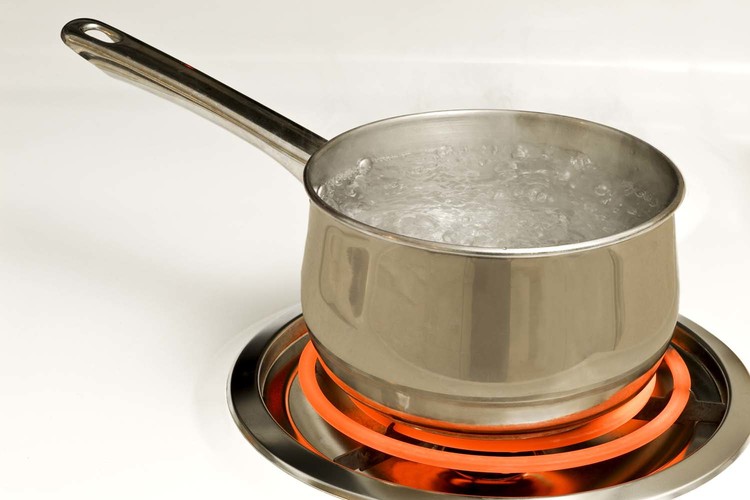To discover warm water
 You have a plastic cup that is filled with 100
of water at 99
. A pot of water is brought to boil (with
) after which the cup is suspended in the boiling water. About how long does it take for the water inside the cup to begin to boil?
You have a plastic cup that is filled with 100
of water at 99
. A pot of water is brought to boil (with
) after which the cup is suspended in the boiling water. About how long does it take for the water inside the cup to begin to boil?
Assumptions
- the cup does not touch the pot itself.
- the rim of the cup does not go under the surface of the water.
- the water in the plastic cup is below the water level in the pot.
- the specific heat of water is 4.186 .
- the cup has thermal conductivity .
secsec
This section requires Javascript.
You are seeing this because something didn't load right. We suggest you, (a) try
refreshing the page, (b) enabling javascript if it is disabled on your browser and,
finally, (c)
loading the
non-javascript version of this page
. We're sorry about the hassle.
The correct answer is > 1 0 4 sec although this is a pretty weak lower bound.
In fact, the water in the plastic cup will never boil, no matter how long it is left in the boiling pot. We'll be waiting for infinite time. The reason for this is the second law of thermodynamics, which in the case of this system can be interpreted to say "heat always flows from a system of higher temperature to a system of lower temperature."
Heat will indeed flow from the water in the pot to the water in the cup until the water in the cup reaches 1 0 0 deg C , but that's as far as it goes. Once the two systems are at the same temperature, no further heat will flow from the pot to the cup.
The same is true of any region of the boiling water above the surface of the pot.The cup is completely irrelevant to the problem. We could give the cup a property of infinite thermal conductivity (all heat passes through it as if no material were there) and zero specific heat capacity (no ability to store heat) and the result would be the same. The cup is simply a device to illustrate a boundary. We could extend the boundary as deep into the pot as we like, as long as it never contacts the surface of the pot, all it will encounter is 1 0 0 deg C water which can't give net heat to the 1 0 0 deg C water inside the boundary.
The only place in the pot where water vaporizes is at the surface of the pot, that's because the metal of the pot is actually at a higher temperature than the water and can therefore deliver the additional energy required to vaporize the liquid. This vapor then rises through the water of the pot and escapes at the surface.
In a sense, the water in the pot is not boiling. Only the water in the thin layer sitting in direct contact with the pot is. This is called nucleate boiling, because the phase transition (water to gas) is "nucleated" by small volumes of water that are kept by irregularities in the surface of the pot. As the temperature of the pot increases, this can transition to the aptly named, "transition boiling" where the surface of the pot is covered by a connected layer of vapor.